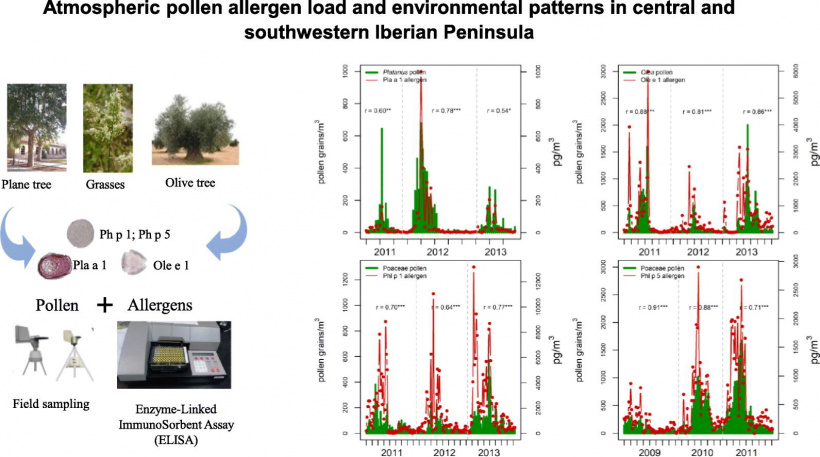Lara, J. Rojo, A.R. Costa, et al., Atmospheric pollen allergen load and environmental patterns in central and southwestern Iberian Peninsula, Science of
the Total Environment (2022) https://doi.org/10.1016/j.scitotenv.2022.159630
Over one quarter of the population in industrialised countries suffers from some type of allergy and inhaled aeroallergens from pollen are the primary cause of allergic ailments. The networks for monitoring biological air quality measure the airborne pollen concentrations that characterize periods of exposure to major airborne aeroallergens but there are certain discrepancies in relation to the allergen-pollen dynamic. In this paper we analyse the airborne allergens Ole e 1, Phl p 1, Phl p 5 and Pla a 1, and interpreted the adjustments and mismatches in their concentrations in relation to airborne pollen. The influence of main environmental patterns was considered. The study was conducted in two urban areas of the centre and southwest of the Iberian Peninsula (Toledo in Spain and Evora in Portugal). Monitoring for pollen followed the standard protocol using Hirst volumetric spore traps and allergenic particles were quantified by ELISA assay. The results indicate that the discrepancies in this relationship were affected by the weather conditions up to 6 days prior. Precipitation and humidity above normal values caused a higher concentration of the allergen Pla a 1. This effect occurred in reverse in the case of humidity for the allergens Ole e 1 and Phl p 1. Humidity and precipitation generated the same pattern in the allergen-pollen relationship in both Phl p 1 and Phl p 5. Our findings show consistent results that allow to interpret the rate of discrepancy between allergen and pollen, and it can be used to improve allergy risk prediction models generated from atmospheric pollen.
Read the full article https://doi.org/10.1016/j.scitotenv.2022.159630

